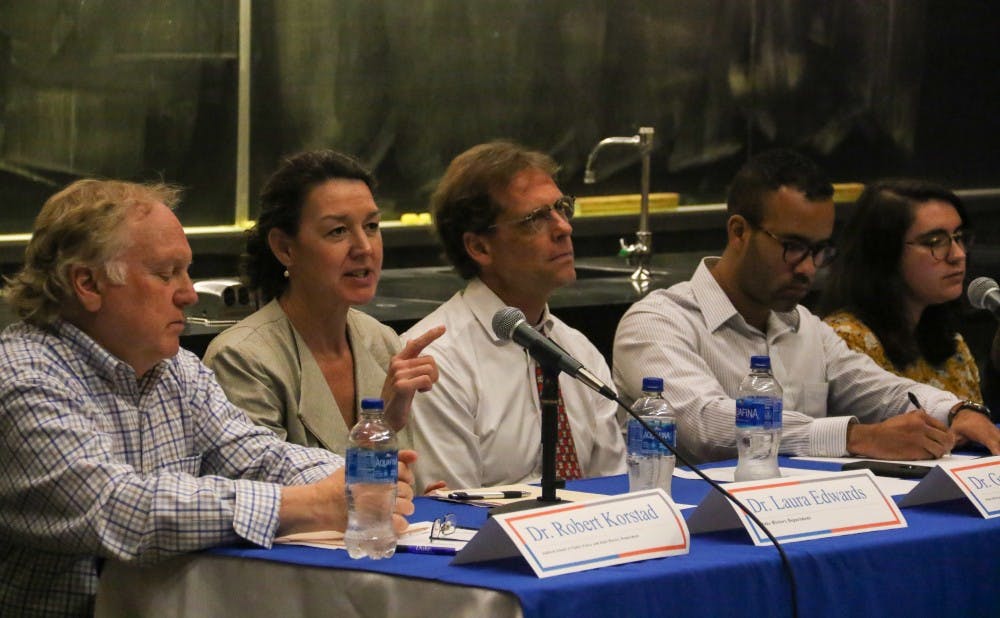Hours after a committee was announced to review the Carr Building's name, a panel of faculty members and students gathered to discuss the issues behind the name.
On the Thursday evening panel regarding the Silent Sam statue and Carr Building, panelists from both Duke and the University of North Carolina at Chapel Hill discussed the controversial buildings on their respective campuses. Like Duke, UNC also has a building named after Carr on its campus.
“If we just allowed this building in Carr’s name to be simply about representing white supremacy from the past, then that’s the only thing that we remember about the past,” said Laura Edwards, Peabody family professor of history at Duke. “Actually, the past is about challenges to white supremacy.”
William Sturkey, an assistant professor in the history department at UNC, said that he refuses to attend meetings in the building named after Carr on UNC’s campus.
“If [Julian Carr] knew that I taught at the University of North Carolina, he would advocate that I was hung from the neck until I was dead,” Sturkey said. “If I walk in the Carr Building, that’s what I think of.”
The Confederate monument Silent Sam was toppled by protesters on UNC’s campus in August. Although administrators have not decided what to do with the statue, Sturkey said that Silent Sam is so toxic that it’s hard to imagine a proper place for it on campus.
“If they were to erect it at its former site, it would be the single most racially hostile act that an American university has done in the 21st century,” Sturkey said.
Meanwhile, Duke students and faculty have been reevaluating memorials of white supremacy on their campus.
The People’s State of the University included renaming the Carr Building in its manifesto published last April. And in August, the history department unanimously voted to propose renaming the building after Raymond Gavins, the first African-American history professor at Duke.
Panelist Gunther Peck, an associate professor of history at Duke, said that Gavins is an ideal namesake because he upholds revered values. It would also break the cycle of Duke buildings being auctioned off to donors.
Edwards suggested reframing the task of naming to move away from honoring a person. That way, she said, future generations can avoid falling into a trap when the individual’s character is later determined to be morally reprehensible.
“We may be expecting too much of people to represent time periods and to become the figures on which we can hang all of our hopes and dreams,” she said. “The Tobacco Workers’ Building, for instance, might actually key us into the different kinds of dynamics from that time period.”
Christine Kinyua, a senior on the panel who works on a Bass Connections team to evaluate the significance of memorialization at Duke, asserted that people should not prioritize choosing a name that is timeless.
“I come from a culture which, 150 years ago, had nothing recorded,” said Kinyua, an international student from Kenya. “Information was passed through stories and narratives, and the memory of people was based on what we chose to value.”
Whether the building is renamed or not, panelists emphasized the importance of contextualizing Duke’s history around campus both in the classroom and through physical exhibits.
Ruebe Holmes, a former student of Gavins who currently works as a staff assistant for undergraduate studies in the history department, emphasized that the administration at Duke must understand the emotional violence that she and other students have endured because of memorials to racism on campus.
“I have to work in this building every single day,” she said. “The labor that we do today is for future students…so that they know when they come to this campus that they are loved and supported.”
Get The Chronicle straight to your inbox
Signup for our weekly newsletter. Cancel at any time.

